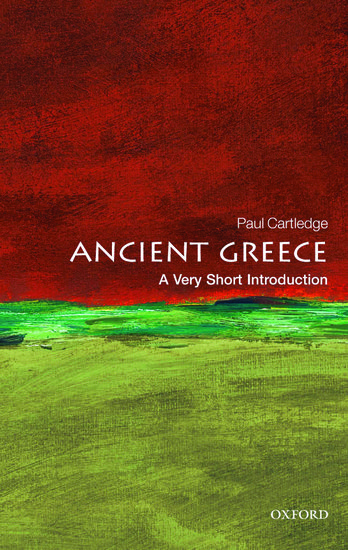Home >
A Very Short Introduction >
The Cell (History)
A Very Short Introduction | History
The Cell
ISBN: 9780199601349
Series: A Very Short Introduction
The Cell (History)
A Very Short Introduction The Cell (History) Media > Books > Non-Fiction > Education Books Expect Delays of Up to 4 Weeks| Order Below |
ISBN
9780199601349 (10-digit ISBN: 0199601348)
- Description
- Key Features
- Series Description
- Table of Contents
- Explains the life-cycle of the cell from division to death, outlining why and how this happens
- From bacteria to mammals the authors discuss the structure, functions, varieties, and evolution of all cells
- Looks at how similar the architectural structures of cellular organization is across the entire plant and animal kingdoms throughout the living world
All living things on Earth are composed of cells. A cell is the simplest unit of a self-contained living organism, and the vast majority of life on Earth consists of single-celled microbes, mostly bacteria. These consist of a simple 'prokaryotic' cell, with no nucleus. The bodies of more complex plants and animals consist of billions of 'eukaryotic' cells, of varying kinds, adapted to fill different roles - red blood cells, muscle cells, branched neurons. Each cell is an astonishingly complex chemical factory, the activities of which we have only begun to unravel in the past fifty years or so through modern techniques of microscopy, biochemistry, and molecular biology.In this Very Short Introduction, Terence Allen and Graham Cowling describe the nature of cells - their basic structure, their varying forms, their division, their differentiation from initially highly flexible stem cells, their signalling, and programmed death. Cells are the basic constituent of life, and understanding cells and how they work is central to all biology and medicine.
Oxford's Very Short Introductions series offers concise and original introductions to a wide range of subjects--from Islam to Sociology, Politics to Classics, Literary Theory to History, and Archaeology to the Bible.
Not simply a textbook of definitions, each volume in this series provides trenchant and provocative--yet always balanced and complete--discussions of the central issues in a given discipline or field. Every Very Short Introduction gives a readable evolution of the subject in question, demonstrating how the subject has developed and how it has influenced society. Eventually, the series will encompass every major academic discipline, offering all students an accessible and abundant reference library.
Whatever the area of study that one deems important or appealing, whatever the topic that fascinates the general reader, the Very Short Introductions series has a handy and affordable guide that will likely prove indispensable.
Please note: As this series is not ELT material, these titles are not subject to discount.
1: Recognising the cell
2: The structure of the cell
3: Cell division, differentiation, and death
4: Special cells for special jobs
5: Stem cells
6: Ethics, politics, and regulation
7: Celluar therapy
8: The future is now
All living things on Earth are composed of cells. A cell is the simplest unit of a self-contained living organism, and the vast majority of life on Earth consists of single-celled microbes, mostly bacteria. These consist of a simple 'prokaryotic' cell, with no nucleus. The bodies of more complex plants and animals consist of billions of 'eukaryotic' cells, of varying kinds, adapted to fill different roles - red blood cells, muscle cells, branched neurons. Each cell is an astonishingly complex chemical factory, the activities of which we have only begun to unravel in the past fifty years or so through modern techniques of microscopy, biochemistry, and molecular biology.In this Very Short Introduction, Terence Allen and Graham Cowling describe the nature of cells - their basic structure, their varying forms, their division, their differentiation from initially highly flexible stem cells, their signalling, and programmed death. Cells are the basic constituent of life, and understanding cells and how they work is central to all biology and medicine.
Key Features
- Explains the life-cycle of the cell from division to death, outlining why and how this happens
- From bacteria to mammals the authors discuss the structure, functions, varieties, and evolution of all cells
- Looks at how similar the architectural structures of cellular organization is across the entire plant and animal kingdoms throughout the living world
Series Description
Oxford's Very Short Introductions series offers concise and original introductions to a wide range of subjects--from Islam to Sociology, Politics to Classics, Literary Theory to History, and Archaeology to the Bible.
Not simply a textbook of definitions, each volume in this series provides trenchant and provocative--yet always balanced and complete--discussions of the central issues in a given discipline or field. Every Very Short Introduction gives a readable evolution of the subject in question, demonstrating how the subject has developed and how it has influenced society. Eventually, the series will encompass every major academic discipline, offering all students an accessible and abundant reference library.
Whatever the area of study that one deems important or appealing, whatever the topic that fascinates the general reader, the Very Short Introductions series has a handy and affordable guide that will likely prove indispensable.
Please note: As this series is not ELT material, these titles are not subject to discount.
EASY ORDER FORM
PRICES LISTED INCLUDE CONSUMPTION TAX
Price Before Tax:
¥1,790


